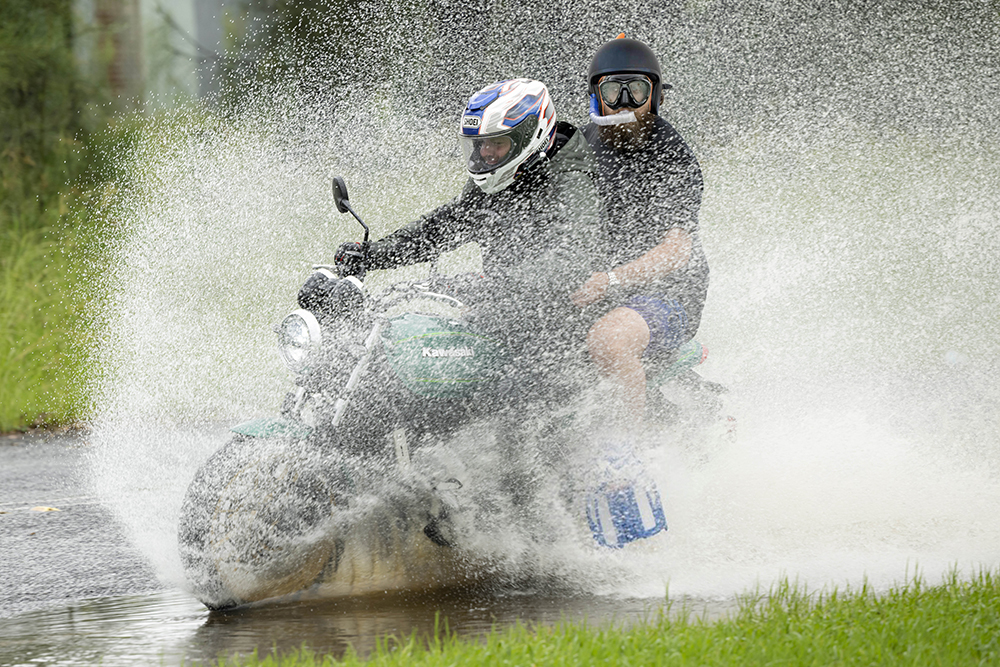In 1972, Kawasaki re-wrote the rules for sportsbikes by bringing racebike double-overhead cam performance to the masses. The cult following for Kawasaki’s Z900 began and it’s still alive and kicking today, 50 years later.
And much like in 1972, when the Z900 was the first bike of the family to be released, the Z650 original came a few years later. So with the modern Z900RS doing well, there is no better time than the present to introduce the brand-new learner-approved Z650 Retro Sport.
![]()
The Z650RS is welcomed into a family of other well-established motorcycles sharing the same parallel 650cc twin-cylinder engine configuration. The Z650 naked, Ninja 650, Versys and Vulcan all share a similar platform. But I think the RS is the pick of the bunch.
At first glance it is easy to recognise the classic Z family resemblance and, once you look a little more closely, you can see the details like dual analogue dials, single round headlight, round taillight and the retro-styled fuel tank are all modelled off the classic Z bikes of the 70s. The Z650RS in candy emerald green with gold wheels looks amazing and stands out in a crowd of fairings and modern nakedbikes.
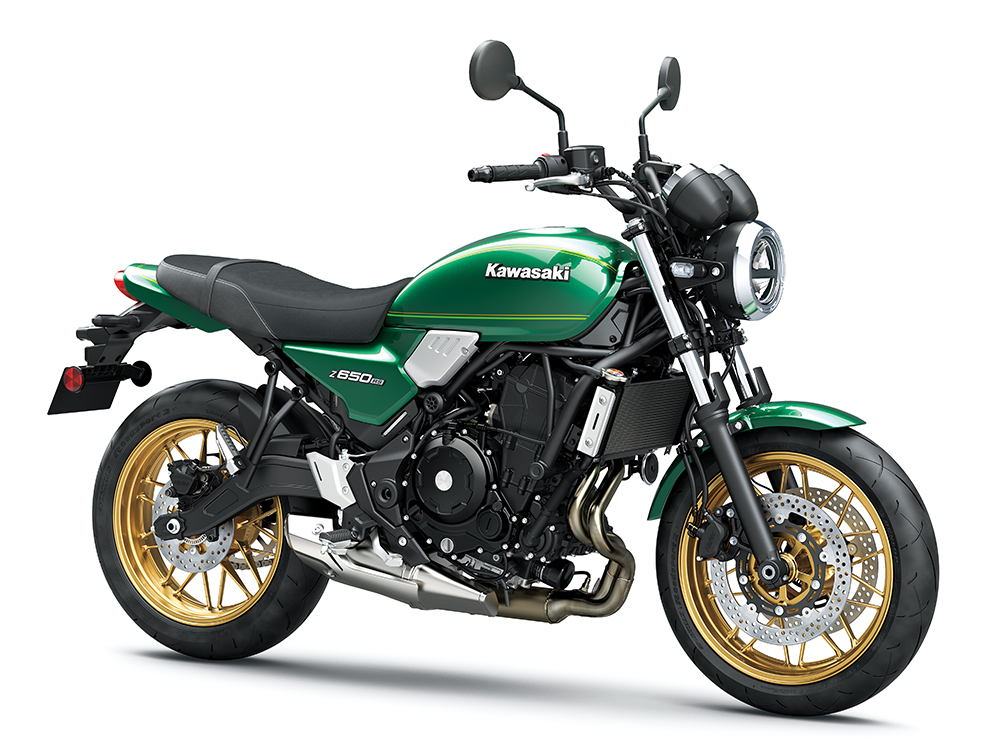
One part definitely not modelled off the old bikes, however, is the engine. The fuel-injected parallel twin is shared with its 650cc twin siblings so it has a few runs on the board already as a reliable, punchy and user-friendly package. I can’t help but imagine how cool an inline four-cylinder 600cc engine would have been as a bit of a nod to the past Zeds.
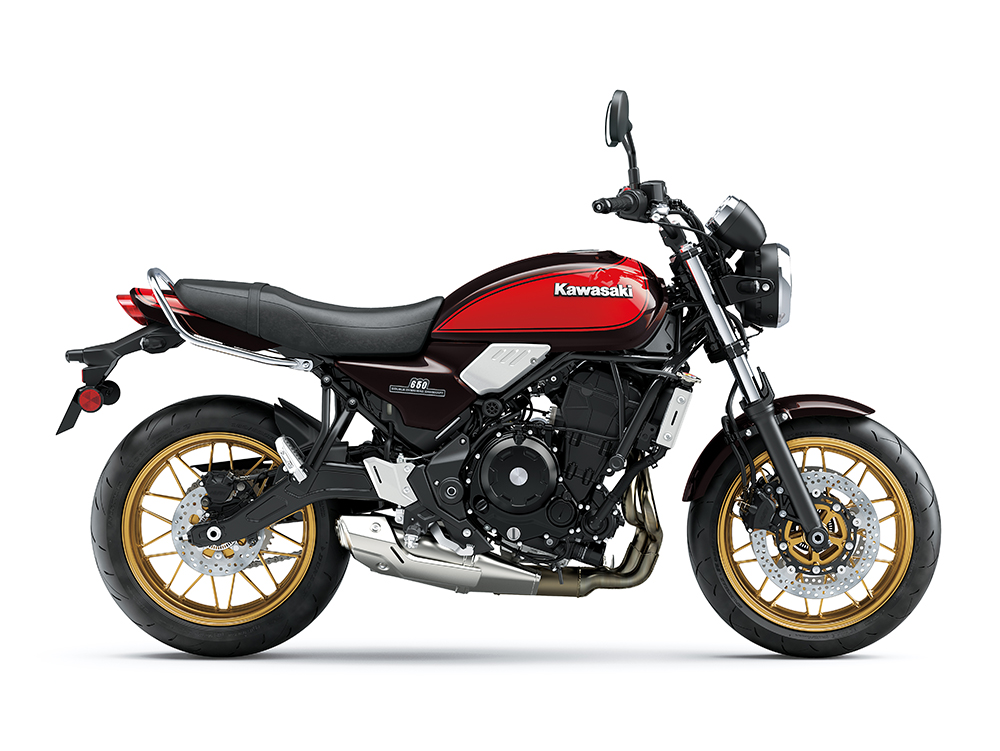
Alas, the twin is far better suited to novice riders and let’s not forget the effect on purchase price and running costs. The engine features a 180-degree crankshaft so it is pretty smooth with very few vibrations. The semi-dry sump reduced both the engine’s size and weight, allowing it to sit low in the frame to lower the centre of gravity. To keep the engine looking cleaner and less complicated, the cooling system has been simplified to reduce unsightly external plumbing and to increase reliability.
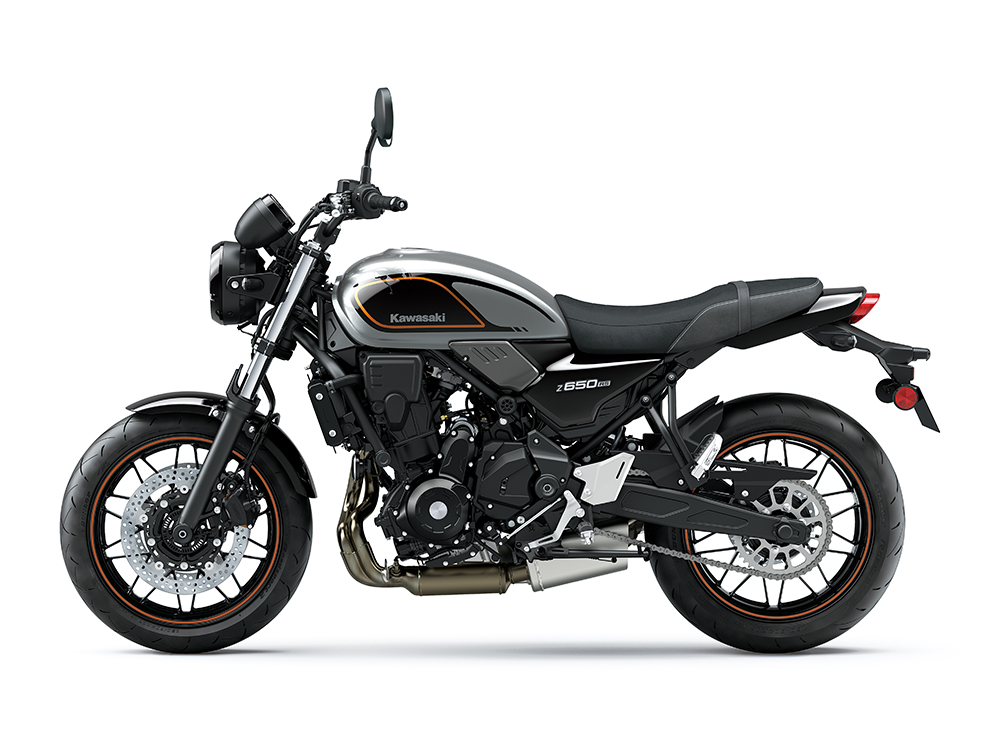
When you fire the Zed into life it has a lumpy idle with a pretty quiet exhaust note emitting from the underslung muffler. I’ll just blame Euro 5 for that. It’s not exactly a knee-quivering four-cylinder sound, but the 649cc unit is well matched for the fun and easy nature of the Z650. The throttle response is crisp and predictable. Kawasaki has tuned the engine for low- to midrange power and torque. So power is on tap right off idle for quick getaways from traffic.
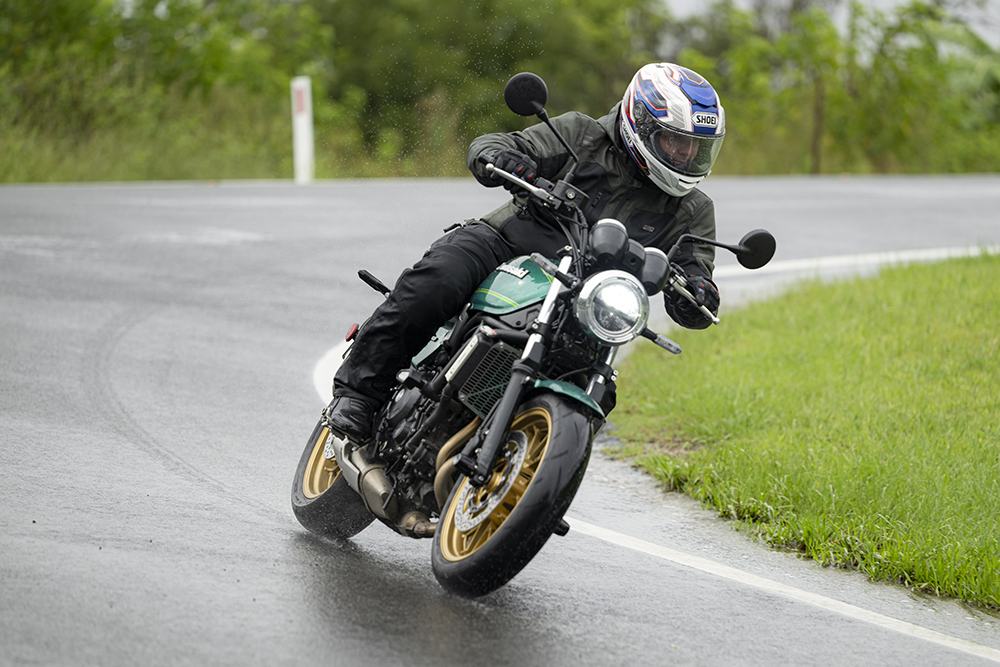
The engine is punchy through the midrange and doesn’t mind being revved out to the 10,000rpm redline, although the power gently tapers off after 8000rpm, so you aren’t making much progress after that. You won’t find a quickshifter on the RS as standard and, to be honest, I don’t really miss it. Clutchless upshifts are a breeze with a small flight of my right wrist and the gearbox is slick and precise. The assist and slipper clutch makes for pretty light clutch-lever feel while still biting in a predictable fashion, and the slipper function is there if you need it. It helps smooth out dodgy downshifts and jerkiness from rapid throttle closings.
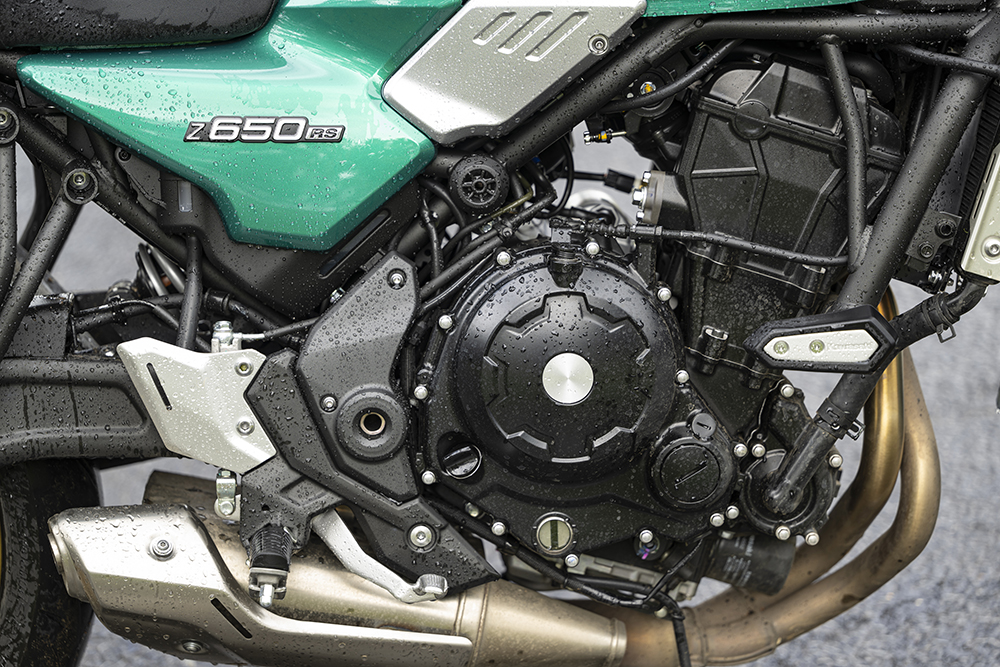
The Zed is right at home meandering through traffic with the clutch out and low in the rev range. It is like an old friend; predictable, friendly and fun. The neutral upright riding position and wide ’bar make manoeuvring easy and give you confidence on the road without putting weight on your wrists. Much praise should be heaped on Kawasaki’s positive neutral finder for making it impossible to not find neutral when stopped. Why the other manufacturers haven’t adopted this is beyond me, especially for newer riders. Simply come to a stop, then click from first gear up to neutral when the bike is running with the clutch in and it will not go past neutral. Simple.
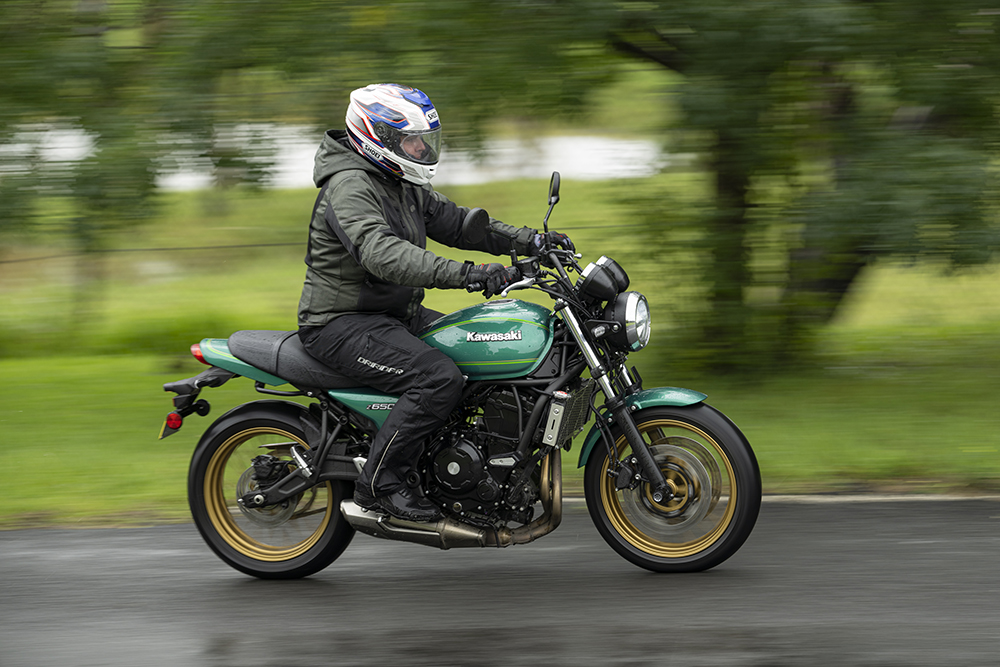
Escaping the rat race and getting out on more open roads, I can stretch the Zed’s legs a bit more. When cruising at freeway speeds you can hardly hear any exhaust note, though you can hear a bit of induction noise when you wind the throttle on in true Kawasaki style. The Zed is happy cruising at 100km/h but when winding it out over the legal speed limit, I’m reminded that this is a LAMS bike after all. The speed is harder to find; it’s not slow, but you have to work it a bit harder than on a full-powered bike. The rest of the time, when you’re not looking to tempt the law, you almost forget that this is a learner-legal machine.
The Z650RS chassis is of the steel-trellis variety and weighs just 13.5kg. It is the same frame as the sportier Z650 nakedbike, but with a flatter subframe to take on the more classic lines.

The engine is also used as a stressed member to save on weight and increase rigidity. The swingarm weighs just 4.8kg, helping keep weight low and close to the centre of gravity.
Up front, the fork is a 41mm conventional style unit to keep with the retro theme, and at the rear a horizontal-linkage monoshock is used to keep the weight in close to the engine.
There are no clickers to play with at either end, only a preload adjustment at the rear which requires the use of tools to tweak.

The fantastic-looking gold cast-alloy wheels are designed to look like wire-spoked wheels from side on while keeping unsprung mass down for improved agility. The Zed comes fitted with sporty Dunlop Roadsport 2 tyres that perform flawlessly on both wet and dry roads. Not that I rode it in the dry much, but I really rate them. Good tyres are a must when building up your skills and confidence, as small mistakes can be saved with good rubber and being able to trust it to save your bacon when you need.
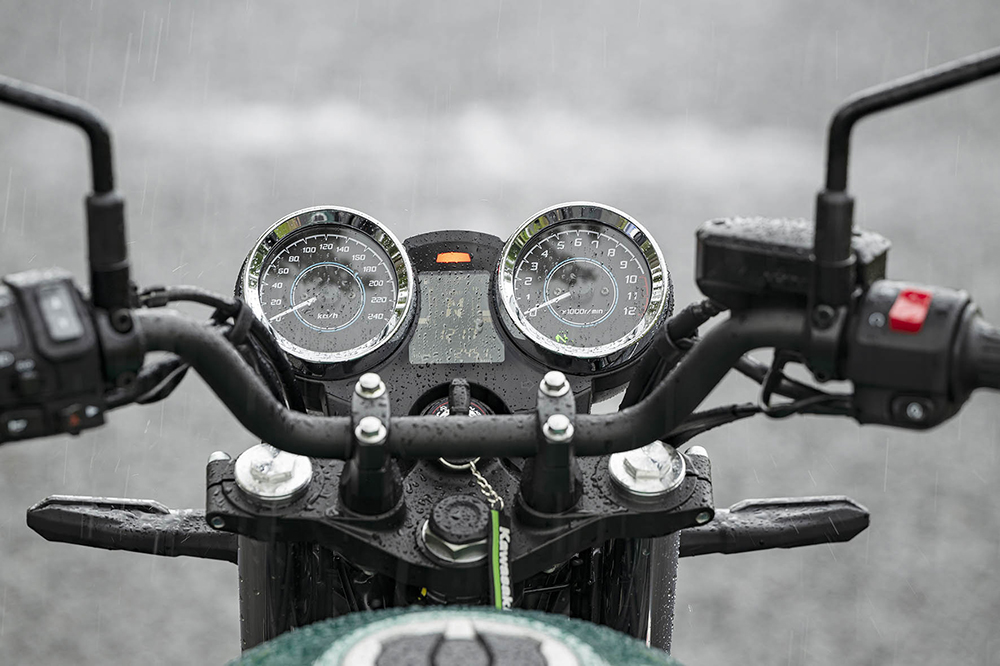
The suspension is tuned for comfort more than outright sports performance so it is pretty soft. This is not a bad thing though as the bike is forgiving over bumps which helps keep things relaxed. The wide ’bar, relatively steep 24° head angle and low centre of gravity make tipping into corners effortless. I find the Zed reasonably stable at full lean when the roads are smooth but the front-end can get a little twitchy under hard braking – but I am above your average weight.

Linking up my go-to set of twisties is a dream. The Zed is very agile and natural feeling. I don’t feel like I need to give it heavy steering inputs just to switch directions, it all feels very intuitive.
The twin-disc Nissin front brakes are beaut. Actually more powerful than I expected them to be and as such, require very little effort at the lever to bring things to a halt while still offering good feel. Bosch 9.1 ABS is standard on the Zed and does not interfere during spirited riding. Both the front brake and clutch levers are span adjustable, which is a nice touch for a bike aimed at novice riders.
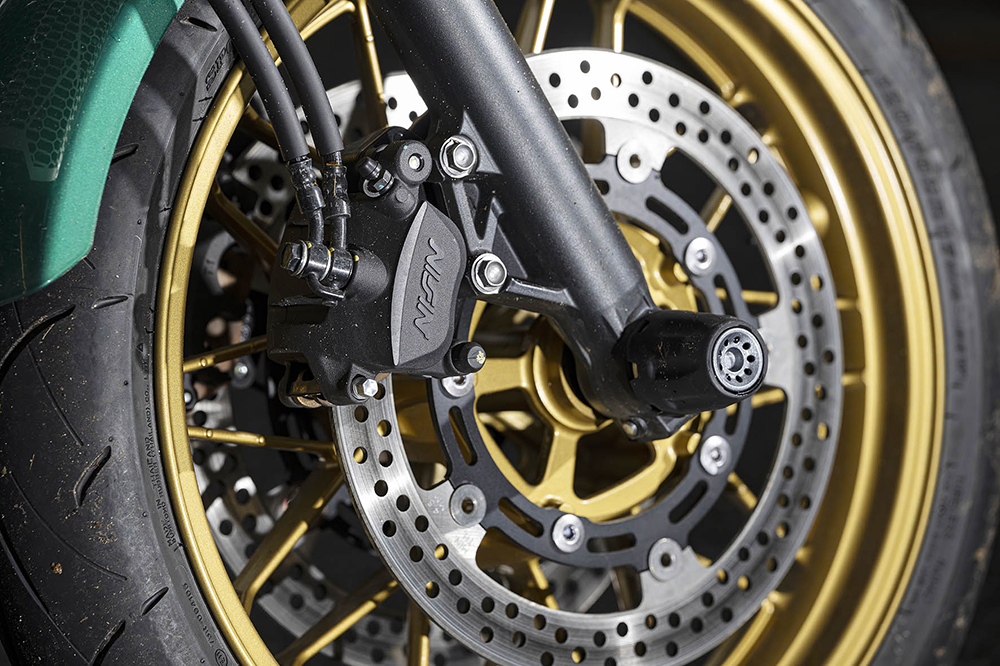
The Z650RS is pretty roomy for my 175cm frame. Gone are the days of learner bikes being tiny little things. The 800mm seat height gives shorter riders some confidence but doesn’t make the rest of the bike feel small. It’s been a while since I could put both feet flat on the ground on anything other than a cruiser. The stepped seat is slim at the front to aid in reaching the ground with both feet. It’s also supportive of long stints in the saddle.
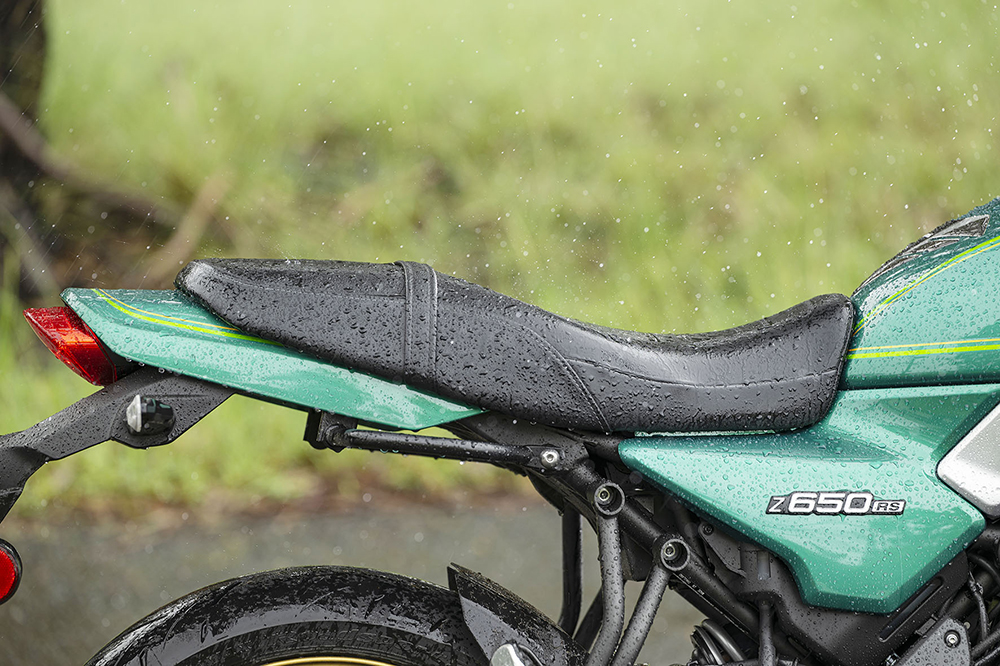
The 12-litre tank is slim between the knees and will take you close to 300km on the open roads on a single fill. The twin analogue gauges look like they are straight out of the 70s but with a nice multi-function LCD screen nestled between them. The Zed isn’t loaded with tech so the dash is a fairly simple unit; odometer, fuel level, fuel consumption, fuel range, water temperature, gear position and trip meters all get a run here. The dash is controlled by one rocker switch on the left handlebar and is very easy to navigate on the fly.
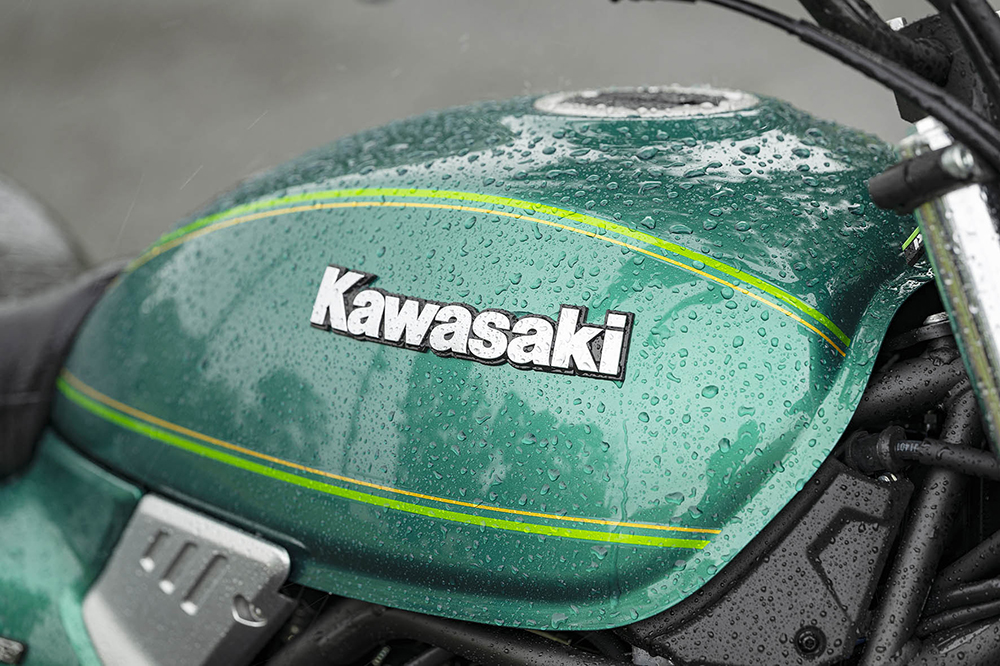
The single round headlight looks like a classic but has been given a modern touch. There are two separate sections for low and high beam while position lamps light up the whole headlight so it looks more retro. When commuting in the dark the headlight is bright and crisp offering good vision at night thanks to LED technology. LED lights are also fitted around the rest of the bike.

Priced at $13,188 (ride away) in New South Wales, the Z650RS is a bit steeper than some of its direct competition. The Triumph Trident, for example, comes in at $12,840 for similar performance but with traction control and ride modes included. But, on the other hand, the Z650RS is a timeless classic even before it has left the showroom floor. The classic Zed styling has stood the test of time and shouldn’t age like more modern styled bikes.
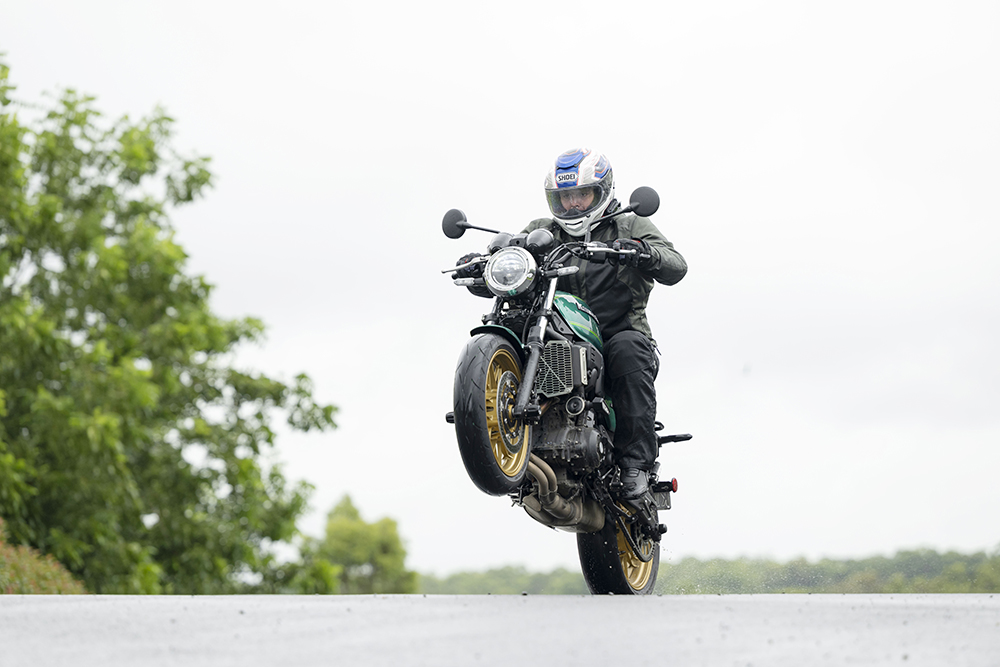
If you are just starting out and find yourself in the market for a full-size bike, the Z650RS should be high on your list. The initial outlay is higher compared to smaller-capacity bikes, but you won’t outgrow the Z650RS for a long time, even when you are finished with your restricted licence, there isn’t really a need to upgrade straight away. The Zed will still be a capable all-round bike for years to come.
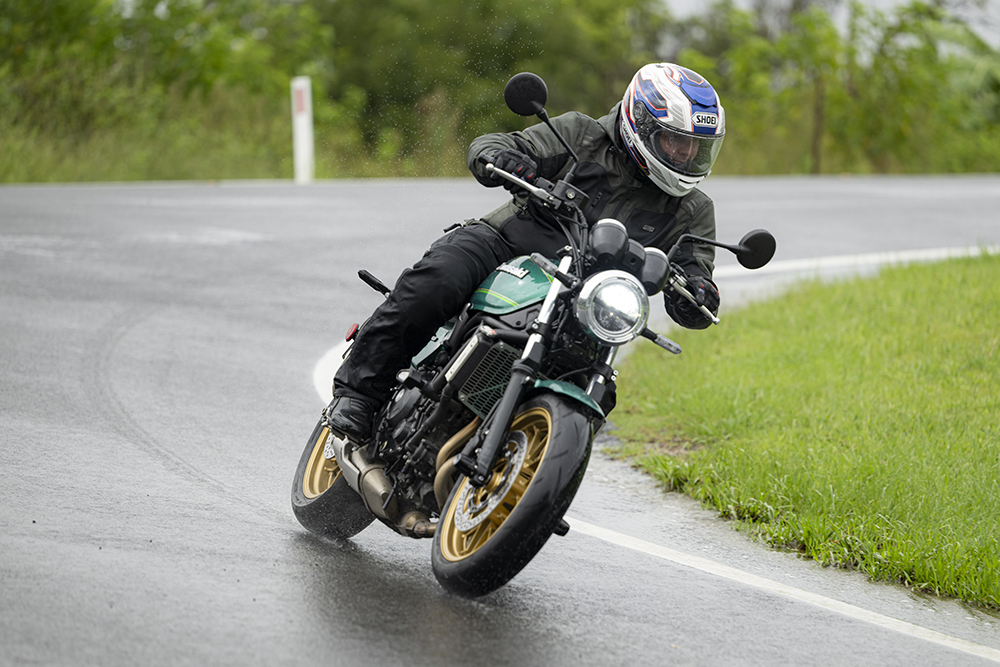
The Z650RS is super capable and user friendly. Going with the less-is-more approach; there are no gizmos to take your attention way from enjoying the ride and improving your skills, but I think some riders would like to see traction control included on the bike even as an optional extra.
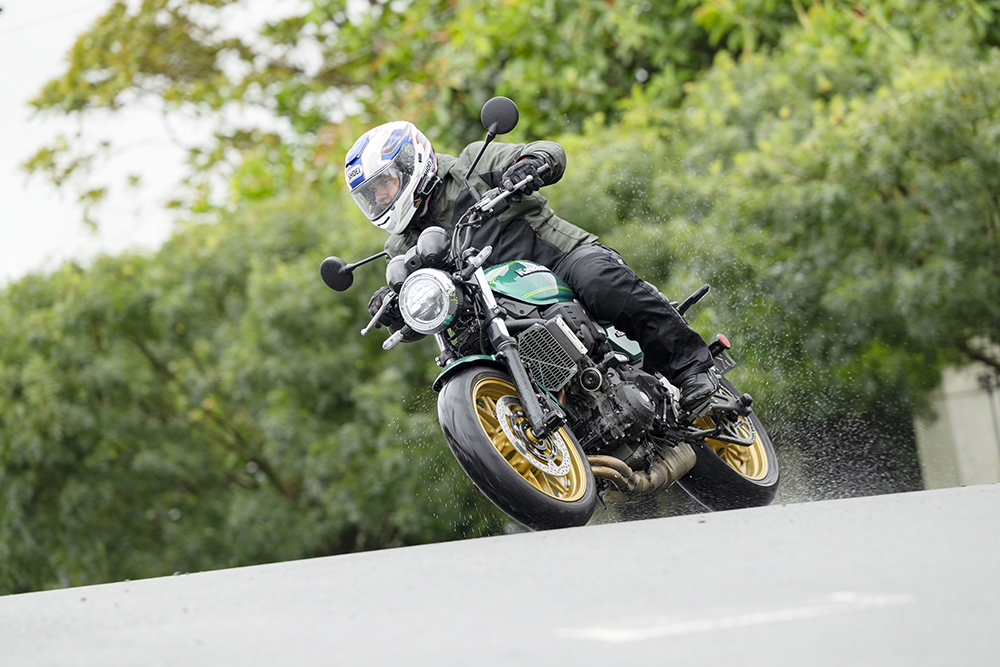
For me it is refreshing to just hit the road and not think about what mode you’re in or if you can do a wheelie or not, but for some potential buyers the lack of traction control might be a deal breaker.
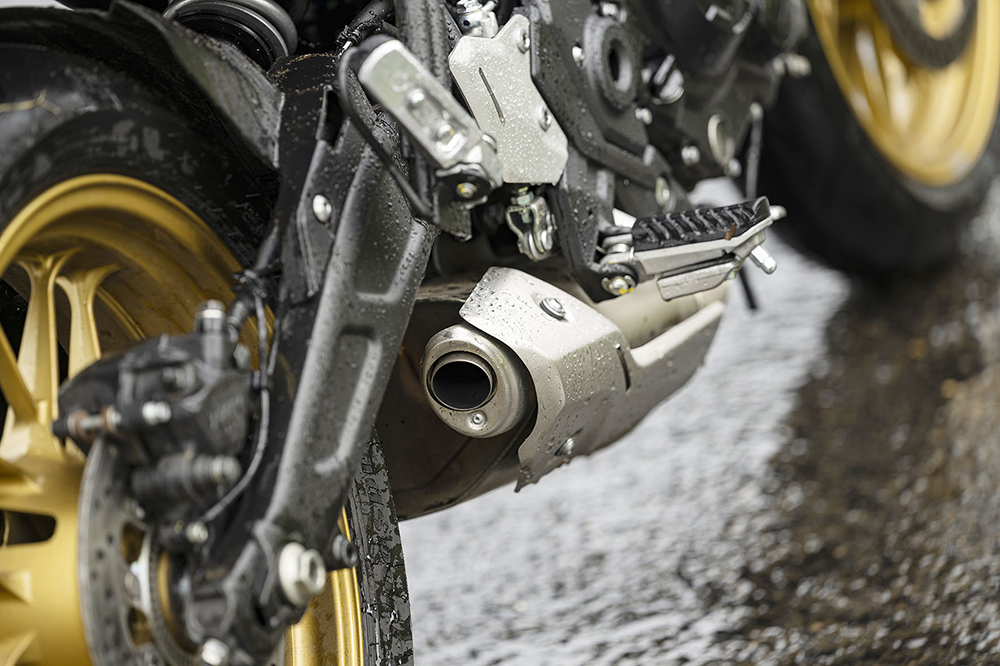
I think Kawasaki has really hit the target with the Z650RS. Yes, it would be fun to have a high-revving inline four-cylinder like the good old days, but I guess the Z900RS has that covered. Whether it’s beating the traffic in the city, cruising down the motorway or carving up some twisties on the weekend, the Zed is simply a breeze to ride.
